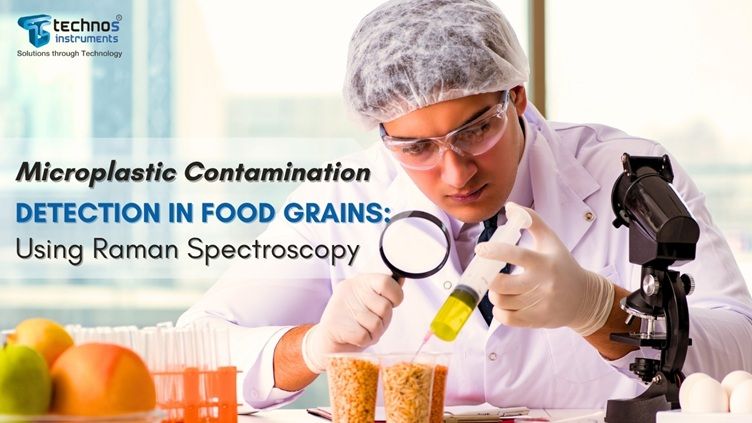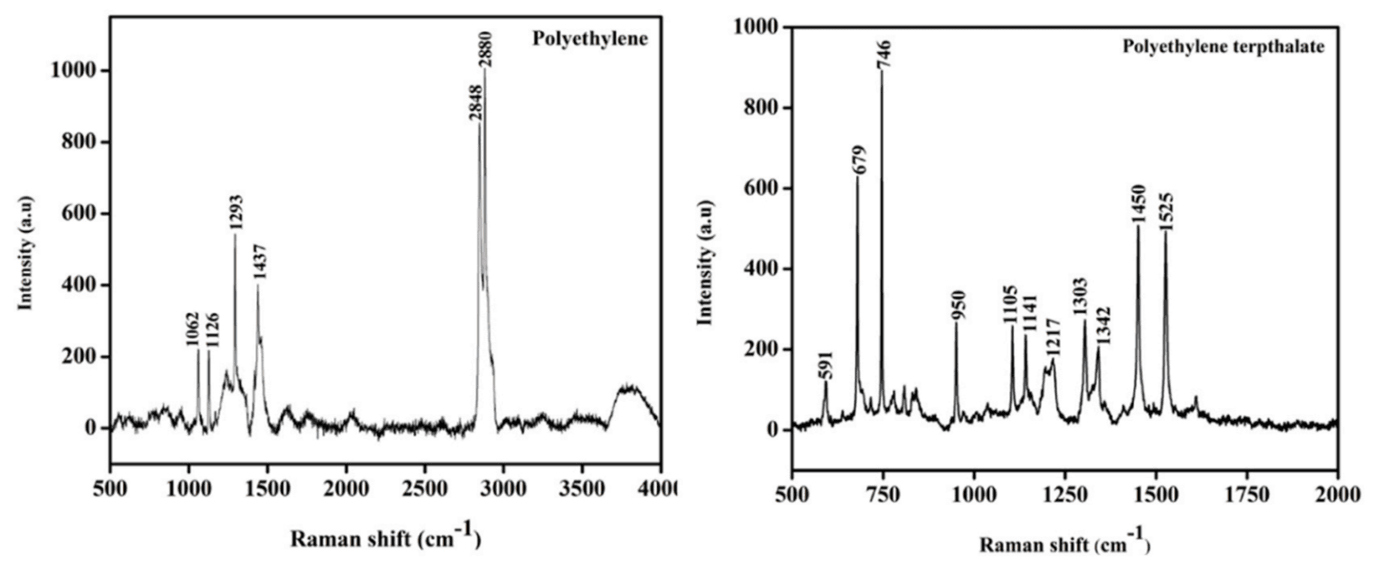
Microplastic Contamination Detection in Food Grains: A Raman Spectroscopy Approach
Microplastic Contamination Detection in Food Grains: A Raman Spectroscopy Approach
March 15, 2025

Introduction
Microplastics (MPs) are tiny plastic particles, typically less than 5 mm in size, that have become a widespread environmental pollutant. Over the past few decades, microplastic contamination has infiltrated the human food chain, raising serious concerns about food safety and public health. These synthetic particles originate from plastic waste degradation, industrial activities, and food processing methods, making them nearly impossible to avoid in daily consumption.
Microplastics have been found in various food sources, including seafood, drinking water, fruits, vegetables, grains, and even salt. The potential health risks associated with their ingestion include gastrointestinal toxicity, endocrine disruption, and bioaccumulation of harmful substances. With rising evidence of microplastic exposure in food, researchers and policymakers are working to mitigate this issue through better detection techniques and regulatory frameworks.
Raman Spectroscopy: A Powerful Detection Tool
Accurately identifying microplastic composition in rice requires sophisticated analytical tools. Raman spectroscopy has proven to be one of the most reliable techniques for this purpose. By exposing microplastic particles to laser light and analysing the resulting scattered radiation, researchers can identify the unique spectral fingerprints of various polymers. This allows scientists to confirm the exact type of plastic present, even in microscopic amounts.

In the Indian rice study, Raman spectroscopy (IndiRAM P785_Tracer Portable Raman Spectrometer and IndiRAM CTR-500C) was used to classify microplastic types. Four major polymers were detected: polyethylene (PE), polyethylene terephthalate (PET), polypropylene (PP), and polyamide (PA). PE and PET were the most abundant, often linked to packaging materials and agricultural films. Raman’s ability to detect minute chemical differences between polymers made it essential for this analysis, especially when dealing with complex, multi-polymer contamination.
How Microplastics Enter the Food Chain
Microplastics contaminate food through various pathways:
Water Sources: Found in tap and bottled water, originating from plastic degradation and industrial waste.
Marine Life & Seafood: Ingested by fish and shellfish, leading to accumulation in human consumers.
Agriculture & Soil: Contamination occurs via plastic mulching, sewage sludge, and microplastic-laden irrigation water.
Food Processing & Packaging: Plastic containers, wraps, and synthetic materials release particles during handling.
Airborne Contamination: Settles on food during processing, storage, and cooking.
Health Risks of Microplastic Consumption
The ingestion of microplastics poses several potential health hazards, including:
Gastrointestinal and Cellular Toxicity: Microplastics can irritate the digestive tract, alter gut microbiota, and penetrate intestinal walls, leading to inflammation and cellular damage.
Chemical Contamination: Many microplastics carry toxic substances such as persistent organic pollutants (POPs), phthalates, and heavy metals, which can accumulate in human tissues.
Endocrine Disruption: Some microplastics release chemicals that mimic hormones, potentially leading to reproductive and metabolic disorders.
Bioaccumulation and Long-Term Health Effects: Continuous exposure may lead to the accumulation of microplastics in human organs, increasing the risk of chronic diseases (Cancer, Heart disease, Stroke, Diabetes, Arthritis, Chronic obstructive pulmonary disease, Alzheimer's, Obesity) and neurotoxicity.
Mitigating Microplastic Contamination in Food
To reduce microplastic exposure in food, researchers recommend:
Improved Agricultural Practices: Reducing the use of plastic-based farming materials and promoting biodegradable alternatives.
Sustainable Packaging: Replacing plastic food packaging with eco-friendly materials to prevent contamination.
Enhanced Water Filtration: Implementing advanced water filtration systems to reduce microplastics in irrigation and drinking water.
Regular Food Monitoring: Using advanced detection methods like Raman spectroscopy to assess contamination levels in food products.
Consumer Awareness: Encouraging consumers to wash food thoroughly, minimize plastic use, and demand stricter regulations on plastic waste management.
Case Study: Microplastics in Rice
Among staple foods, rice—a primary dietary component for billions worldwide—has come under scrutiny for microplastic contamination. A study on microplastic contamination in Indian rice provided alarming insights into the presence, types, and health risks associated with these plastic pollutants.

Microplastic Infiltration in Rice
Researchers detected microplastics in every sample tested across ten widely consumed rice varieties in India. On average, 30.3 particles were found per 100 grams of rice. Most of these particles were small Fibers, with sizes ranging from less than 0.05 mm to 1 mm. Transparent and black Fibers were particularly common, indicating contamination from plastic bags, threads, and synthetic packaging materials.
Conclusion
Microplastic contamination in food, particularly in staple grains like rice, is an alarming issue with far-reaching health implications. Understanding the pathways of contamination and using advanced techniques such as Raman spectroscopy for detection can help mitigate risks. By implementing sustainable agricultural and packaging solutions, along with stricter food safety regulations, we can work toward minimizing microplastic exposure and ensuring a safer food supply for future generations.
Courtesy Journal of Hazardous Materials, Microplastic contamination in Indian rice: A comprehensive characterization and health risk assessment
Related Articles
- Behind the Pills Identifier: Unmasking Illicit Drugs with Raman Spectroscopy
- Crystal Clarity: Understanding Quartz Through Raman Spectroscopy
- Field Testing Simplified: Benefits of Portable Raman Spectrometers
- IndiRAM Raman Spectrometer for identification of Excipients in Pharmaceutical Drugs
- Gemstone Identification with Raman Spectroscopy: Preserving Purity, Authenticity, and Trust in the Industry
- Innovations in Raman Spectroscopy: TechnoS at the Forefront
- Powering the Future: How Raman Spectroscopy is Advancing Battery Material Analysis
- Principle of Raman Spectroscopy & Core Components
- Raman Spectroscopy: A Transformative Tool Across Science, Industry, and Society